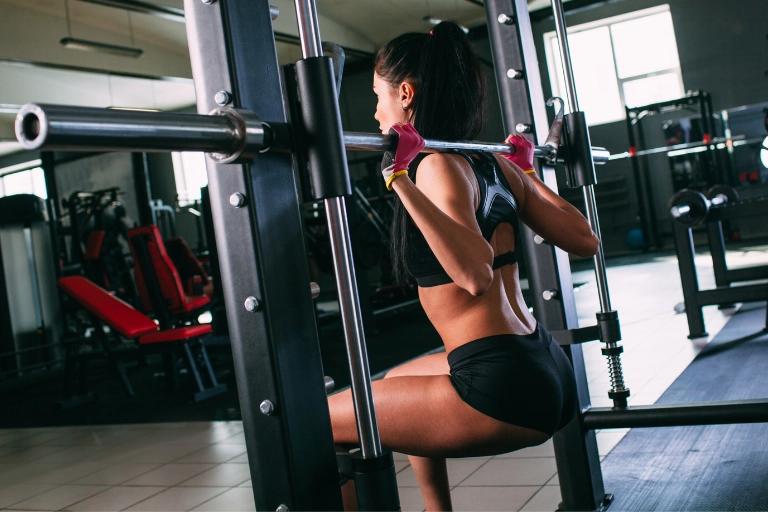The Push Pull Legs Split:
What Is The Push Pull Legs Split?
The push pull legs split also known as the PPL split, is a popular training split that organizes training into three distinct movement pattern days. Pushing movements, pulling movements, and legs are trained on separate days. In this setup related muscle groups are trained together in the same workout, with all the major muscle groups trained throughout the week.
On push days you will train the chest shoulders and triceps, and on pull days the back, rear delts, and biceps will be trained. The quads, hamstrings, glutes, and lower back will be trained on leg days.
Push Day Movements

Pull Day Movements

Leg Day Movements

How To Run The Push Pull Legs Split
The push pull legs split is typically run 6 days per week, with two push sessions, two pull sessions, and two leg days each week. When using this setup it is common to have separate training plans for each push pull and leg day, for example, push A, then later in the week push B.
The same movement patterns are trained however different exercises are performed each day. You may perform barbell bench press and machine shoulder press on push A, and incline dumbbell press and machine chest press on push B for example.
Here are two commonly used push pull legs split setups:
| Mon | Push A |
| Tue | Pull A |
| Wed | Legs A |
| Thu | Push B |
| Fri | Pull B |
| Sat | Legs B |
| Sun | Rest |
| Mon | Push A | Rest |
| Tue | Pull A | Push A |
| Wed | Legs A | Pull A |
| Thu | Rest | Legs A |
| Fri | Push B | Rest |
| Sat | Pull B | Push B |
| Sun | Legs B | Pull B |
In the first setup, we complete one whole cycle performing each A and B workout back to back before taking a rest day and repeating the cycle. In the second setup, we perform all our A workouts and then take a rest day, before finishing the cycle with our B workouts followed by another rest day.
In the second setup we are getting a little extra recovery each week after we have completed our A workouts, however, we will not have set days to train on over the week. Some people prefer this because if they miss a day they can simply continue with their schedule the following day, while others prefer to have set days to train each week and a set rest day such as at the weekend.
Is The Push Pull Legs Split Effective For Building Muscle?
The push pull legs split is an effective split for building muscle (hypertrophy) and is widely used by physique athletes such as bodybuilders. It can also be an effective split for building strength and is also used by strength athletes such as powerlifters. The squat, bench press, and deadlift can fit well into a push pull legs split if set up correctly with the correct placement of the big three lifts.
As with most training splits the push pull legs split can be used for a power-building approach when set up correctly, focusing on strength for some of the main lifts combined with more hypertrophy or bodybuilding style training to build muscle. The push pull legs split can also be used in fat loss phase to preserve and/or build muscle.
What Are The Pros Of The Push Pull Legs Split?

The push pull legs training split is a time-tested training split and for good reason. Here are some of the benefits of the push pull legs training split:
Intensity
The push pull legs split can be great for intensity and may well be the reason it is the go-to split for many advanced lifters. By splitting the upper body into two sessions, pushing and pulling movements can receive maximum focus in a session, compared to other popular splits such as the upper lower split where the whole upper body is trained in a session.
Recovery
When performing the push pull legs split, there is minimum overlap between movement patterns when set up correctly, and this can be great for recovery between sessions. Your pulling movements will not be affected by the pushing movements you did the previous day. Your lower body training should not be affected by the pulling movements you performed the previous day as long as you are not performing heavy hip hinge movements on your pull day.
Movement Pattern Focus
Since the push pull legs split is organized around movement patterns it can promote balanced muscle development when set up correctly and can reduce the risk of muscular imbalances. There is one caveat to this however, more on this later.
Frequency
When performing the 6 day push pull legs split, training frequency for each muscle group is twice per week which is the sweet spot for most people, even advanced lifters. Twice-per-week training frequency has been shown in research to be effective for hypertrophy or building muscle.
Flexibility And Customization
The push pull legs split is highly customizable since it is organized around movement patterns, and can therefore be tailored to the specific goals of the individual and their personal preferences for how they like to train.
Can Prevent Overtraining
The push pull legs split can prevent people from overtraining or more likely overreaching. Training frequency for each muscle group is set at twice per week, and muscle groups will always have at least 2-3 days of rest before they can be trained again.
In session Volume
Some coaches believe that in-session training volume is important to maximize hypertrophy. This means that a muscle group requires a certain amount of volume within a training session. The push pull legs split allows more volume to be performed for individual muscle groups within a training session compared to other training splits such as the upper lower or full body split.
I have not seen this to be true and research points to overall weekly volume for a muscle group as being the most important factor for muscle growth. Some coaches believe that in-session volume may be more important for more advanced lifters, and there may be some truth to this, however, it is likely not a concern for most people.
Can Be Useful For Busy Public Gyms
One potential non-training-related benefit of the push pull legs split is that it can be useful when training in busy public gyms. Since we are performing separate movement patterns in each session it is easier to use one or two pieces of equipment rather than having to move around the gym to train different body parts, hoping that the piece of equipment you want to use is free. Something to think about especially if you only have limited time to train.
What Are The Cons Of The Push Pull Legs Split?

No training split is perfect, here are some of the potential drawbacks of the push pull legs split:
Increased Time Commitment
One potential downside of the 6 day push pull legs split, is the time commitment. Training 6 days per week is not realistic for many people. If you have other activities you like to perform outside of the gym the push pull legs split is likely not a great fit for you. If you love the simplicity of the push pull legs split and training separate movement patterns each day, there are ways to use this training split fewer days per week. More on this later.
Systemic Fatigue
Although the push pull legs split is great at managing local fatigue, training six days per week will accumulate more systemic fatigue compared to training fewer times throughout the week.
Local fatigue is the fatigue accumulated by individual muscle groups after a training session. Depending on how strong you are, the number of sets you performed, as well as your exercise selection, this fatigue is not long-lasting. Most individuals are fully recovered and can train the same muscle group within 48-72 hours.
Systemic fatigue is related to the nervous system, accumulates over time, and is not local to specific muscle groups you trained. When training six days per week your nervous system will have less opportunity to recover between training sessions and this can affect your performance over time.
How much of an effect this will have will vary greatly on the individual. Factors such as age, level of advancement and strength, exercise selection, number of reps performed, nutrition, sleep and recovery, as well as stress levels, will all play a role.
Frequency Can Not Be Scaled Up
Since we are training push pull legs over six days our training frequency will be fixed at twice per week for each muscle group. The potential downside to this is that if we need to perform more volume over the week, the in-session volume for each muscle group may become fairly high, which could affect the intensity of our later sets in a training session.
This may or may not be an issue, and will depend on the training age or level of advancement of a lifter, and whether they follow a more volume-based approach to training or not.
Twice Per Week Training Frequency May Not Be Enough For Smaller Muscle Groups
Related to the above point, smaller muscle groups such as biceps, and medial and rear delts may need more volume to maximize hypertrophy. These muscle groups recover quickly so training them with a higher frequency and volume works well and may be necessary, especially for advanced lifters. With the push pull legs split training frequency is fixed at twice per week as mentioned previously.
Arms May Receive Less Work
The biceps and triceps are typically worked at the end of a push or pull session after the main movement patterns have been performed. This can lead to a drop in intensity and focus for these muscle groups and can result in underdeveloped arms compared to the torso in some lifters. This may be more of a concern for torso-dominant lifters, those who do not have the best genetics, and those who want to focus on increasing the size of their arms.
There are some possible workarounds for this, such as training the biceps first on a pull day, although most people will find training the triceps first on a push day will negatively affect their performance in their main pushing movements.
It may be worth experimenting with placing your biceps training on your push day, and your triceps training on your pull day. This then becomes a chest/biceps, back/triceps, legs split. You can then place some arm work towards the beginning of a session and it won’t affect your main movements. For example, you could perform a push movement and superset it with a bicep curl in between sets, or perform all your bicep work at the beginning of a push session if that is a priority muscle group.
Potential For Joint Overuse Injuries
Although you are training different movement patterns on push and pull days, you are still working the same joints on back-to-back days in the push pull legs split, and so there is a potential for joint issues and overuse injuries for some individuals, although this is not a situation I have seen too often. This may be more of an issue with individuals recovering from injury or older individuals with a history of joint issues and/or injuries.
Modifying The 6 Day Push Pull Legs Split

There are a few modifications that can be made to the 6 day push pull legs split to change the order of the training days, as well as the number of times we train each week, which will then change the training frequency for each muscle group per week.
Pull Push Legs
Some people like to include deadlifts on their pull days, although I would generally place it on a leg day, classifying it as more of a hamstring movement rather than a back movement. If this is the case, and you will be performing a barbell or safety bar squat the next day, your lower back will likely have not completely recovered from the deadlifts the day before. Many people also like to perform rack deadlifts on their pull day to target the upper back and traps, however, this will still work the lower back fairly hard.
A simple way around this is to change the order of our split to pull push legs. This then creates a day of recovery between our pull and legs workout. Some thought is still required here, as you could have the same potential issue if you are performing your pull day after your leg day if you did not take a break between your A and B training sessions.
In general, we do not want back-to-back days where we perform lifts with heavy axial loading. Axial loading is where the spine is being compressed and the lower back is heavily worked such as in the deadlift and squat. You may be able to deadlift the day after squats but this is still not ideal in my opinion. Squatting the day after performing deadlifts is likely more of a problem.
Of course, if you set up the push pull legs split well, and you used machines (less axial loading) to train your legs the day after a pull day, then the factors mentioned previously would not be an issue. I would generally place any heavy hip hinge movement on a leg day as there is always some overlap between the squat and hip hinge movement pattern.
Training Less Frequently
Some people love the simplicity of the push pull legs split, and prefer to organize their training with different movement patterns each day, however, they do not want to train 6 days per week. Luckily we can still use a push pull legs split, and train less often throughout the week.
Here are two commonly used set-ups you can use:
Push Pull Legs 4 Day Split
| Mon | Push A | Pull B | Legs A |
| Tue | Pull A | Legs B | Push B |
| Wed | Rest | Rest | Rest |
| Thu | Legs A | Push A | Pull B |
| Fri | Rest | Rest | Rest |
| Sat | Push B | Pull A | Legs B |
| Sun | Rest | Rest | Rest |
Push Pull Legs 5 Day Split
| Mon | Push A | Legs B | Pull B |
| Tue | Pull A | Push A | Legs B |
| Wed | Legs A | Pull A | Push A |
| Thu | Off | Off | Off |
| Fri | Push B | legs A | Pull A |
| Sat | Pull B | Push B | Legs A |
| Sun | Off | Off | Off |
With the push pull legs 4 day split, you are training a muscle group once every 4-5 days. Training frequency is increased slightly with the push pull legs 5 day split where you are training a muscle group once every 3-4 days.
These training frequencies are slightly lower than twice per week, however, they are still effective and are superior to a once-per-week training frequency. A slightly lower training frequency can even be better for some older and/or stronger individuals who may need more time to recover before training the same muscle group again. It can also be better for individuals with joint issues.
You can also use a rotating 5-day cycle, using a 2 days on, 1 off, 1 on, 1 off, repeat schedule. The days you train on will be different each week.
Rotating 5 Day Cycle
| Wed | Push A | Rest | Rest |
| Tue | Pull A | Legs B | Push B |
| Wed | Rest | Rest | Pull B |
| Thu | Legs A | Push A | Rest |
| Fri | Rest | Pull A | Legs B |
| Sat | Push B | Rest | Rest |
| Sun | Pull B | Legs A | Push A |
Three Day Minimalistic Set-up
If you wanted to run the push pull legs split, as a minimalistic training program you could use a three day per week setup, for example on a Monday, Wednesday, and Friday. This setup would only have you training a muscle group once per week, which is likely not the best frequency for most people. However, if you are happy with the amount of muscle you have, or have a busy period in your life coming up, you could easily maintain your muscle with a relatively low weekly volume hitting a muscle group once per week.
Do We Recommend The Push Pull Legs Split?
The push pull legs split is an effective training split that has stood the test of time, and there is a good reason why many physique and strength athletes use this split. Its simplicity and movement pattern organization allow related muscle groups to be trained together in each session and there are no issues with overlap between different muscle groups which ensures adequate recovery between sessions. It is an effective training split for muscle growth and muscle strength.
It is best suited to intermediate or advanced lifters, although beginners could still use this split if they enjoy the scheduling and how it is set up. The training split an individual enjoys and can be consistent with can often be the best split for them. In most cases, we do recommend beginners start with a full body or upper lower body split.


